Improved Human Identification with 8-Dye STR Multiplex Technology
Promega Corporation
Publication Date: September 2023
Abstract
There are a number of different methods by which forensic scientists can process DNA samples, but short tandem repeat (STR) analysis through capillary electrophoresis (CE) remains the gold standard. Scientists can encounter problems using STR analysis to process DNA samples in the lab if these samples are degraded, inhibited, mixed or present only in trace amounts. Here, we discuss new technologies designed to support the successful and efficient analysis of such sample types.
In this article we will give an overview of the methods and benefits to using the 8-dye PowerPlex® 35GY System in combination with the Spectrum CE System for processing challenging DNA samples in forensic laboratories. The PowerPlex® 35GY System offers an expanded set of loci, including Y-STRs, and the Spectrum CE System enables the efficient, high-resolution separation and detection of DNA fragments. By using these systems together, forensic laboratories can achieve accurate and reliable DNA profiling, even in complex cases, leading to improved human identification and greater overall efficiency in forensic DNA testing.
Introduction
DNA forensic analysis can provide conclusive evidence to trace specific individuals to a crime scene and has been instrumental in solving cold cases, exonerating the wrongfully accused and bringing justice to victims and their families. Technological advances over the last few decades have improved the precision and reliability of DNA forensic analysis, raising the standard of proof in courts and reducing the likelihood of wrongful convictions. Additionally, DNA forensic analysis aids in identifying disaster victims, resolving paternity disputes and assisting in missing persons cases.
Today, the most widespread method used for DNA analysis in forensic labs is STR analysis. The technology available to perform STR analysis has improved markedly over the years, but the field is still riddled with significant challenges. Forensic scientists face obstacles including processing degraded samples, inhibited DNA or DNA mixtures wherein trace amounts of DNA from several people are present, which can all muddy analyses. New tools like the Spectrum CE System for capillary electrophoresis and the PowerPlex® 35GY System for PCR amplification and fluorescent detection are designed to support complex forensic analyses, producing more complete information from challenging sample types in less time.
PowerPlex® 35GY System
The PowerPlex® 35GY System is a 35-locus multiplex PCR system that allows the co-amplification and fluorescent detection of the 20 autosomal loci in the expanded CODIS core loci, plus Amelogenin and DYS391 for gender determination (Figure 1). The inclusion of Penta D, Penta E and SE33 loci increases resolution, allows wider database searching and improves the discriminatory power of analysis between individuals. The PowerPlex® 35GY System also includes ten additional Y-STR loci, or male-specific markers. The presence of Y-STR loci increases the amount of data obtained in a single amplification and can provide valuable insight for genealogy or in the analysis of sexual assault evidence by helping determine the number of male contributors in a sample.
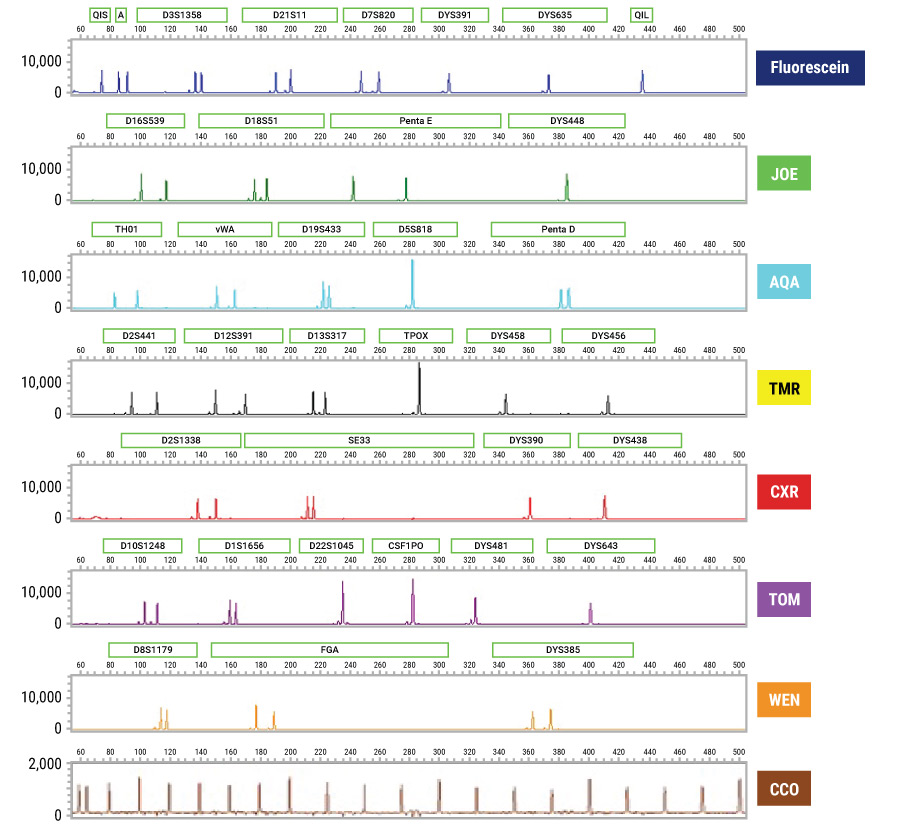
Figure 1. Amplifying Extracted DNA with the PowerPlex® 35GY System. The 2800M Control DNA (1ng) was amplified using the PowerPlex® 35GY System. Amplification products were mixed with CCO Internal Lane Standard 500 and separated on the Spectrum CE System. Electropherogram was generated using GeneMarker® HID Software for Spectrum CE Systems. Dye names are shown on the right.
The PowerPlex® 35GY System amplifies multiple loci in a single reaction, conserving DNA samples, and offers enhanced sensitivity, enabling successful analysis even when DNA is present only in trace amounts. DNA samples can become degraded through exposure to various environmental conditions, with this type of degradation often occurring in missing persons cases, forensic casework and mass disasters. Degraded DNA can sometimes produce incomplete or absent STR profiles due to the dropout of larger loci. By incorporating two additional dye channels, the loci in the system are smaller, producing more accurate and complete STR profiles and making the PowerPlex® system especially suitable for processing both cold case samples as well as new samples. Figure 2 shows an electropherogram of degraded DNA from a femur where up to 22 loci are called, while Figure 3 shows how the kit performs well with lower amounts of input DNA.
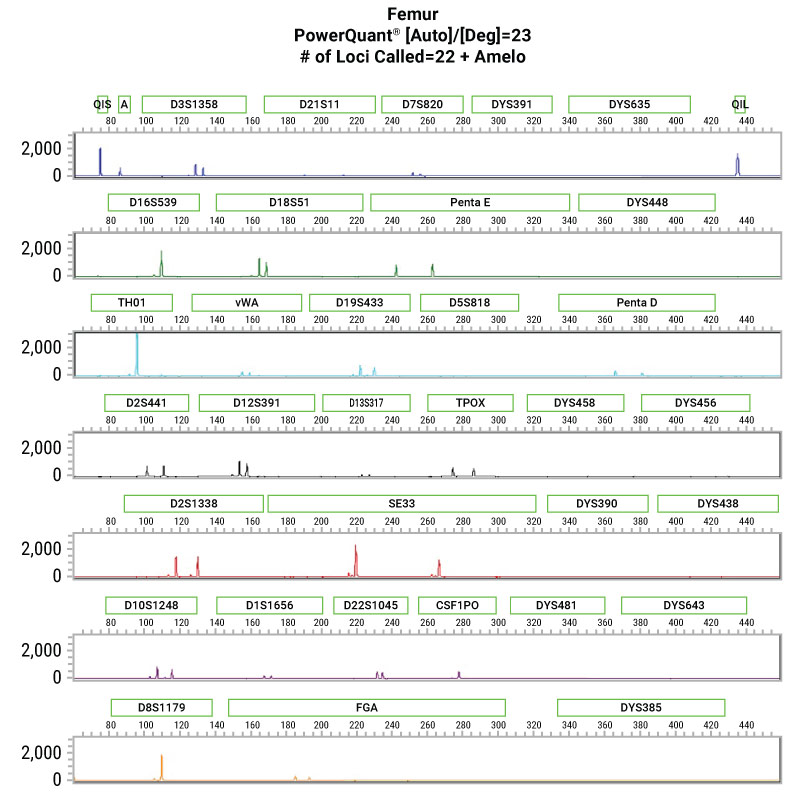
Figure 2. Better Results with More Mini-STRs in the PowerPlex® 35GY System. Extracted DNA (1ng) from a femur was amplified using the PowerPlex® 35GY System. Amplification products were separated on the Spectrum CE System and analyzed using GeneMarker® HID Software for Spectrum CE Systems.

Figure 3. Sensitivity of the PowerPlex® 35GY System. Varying amounts of extracted DNA were amplified using the PowerPlex® 35GY System. Amplification products were separated on the Spectrum CE System and analyzed using GeneMarker® HID Software for Spectrum CE Systems. The number of and percent alleles called are an average of four amplifications with each input DNA amount.
Like previous PowerPlex® systems, the PowerPlex 35GY System offers increased resistance to PCR inhibitors. The system includes two Quality Indicators, QIS and QIL, to assist in data analysis and interpretation (Figure 4). The Quality Indicator Small (QIS) migrates at approximately 75bp and covers the lower base pair range of the amplification product, while the Quality Indicator Large (QIL) migrates at around 435bp and covers the higher base pair range. These indicators can assess the success of a PCR reaction and can also detect inhibition or degradation in a sample so that users can quickly determine whether they need to repeat their sample analysis.
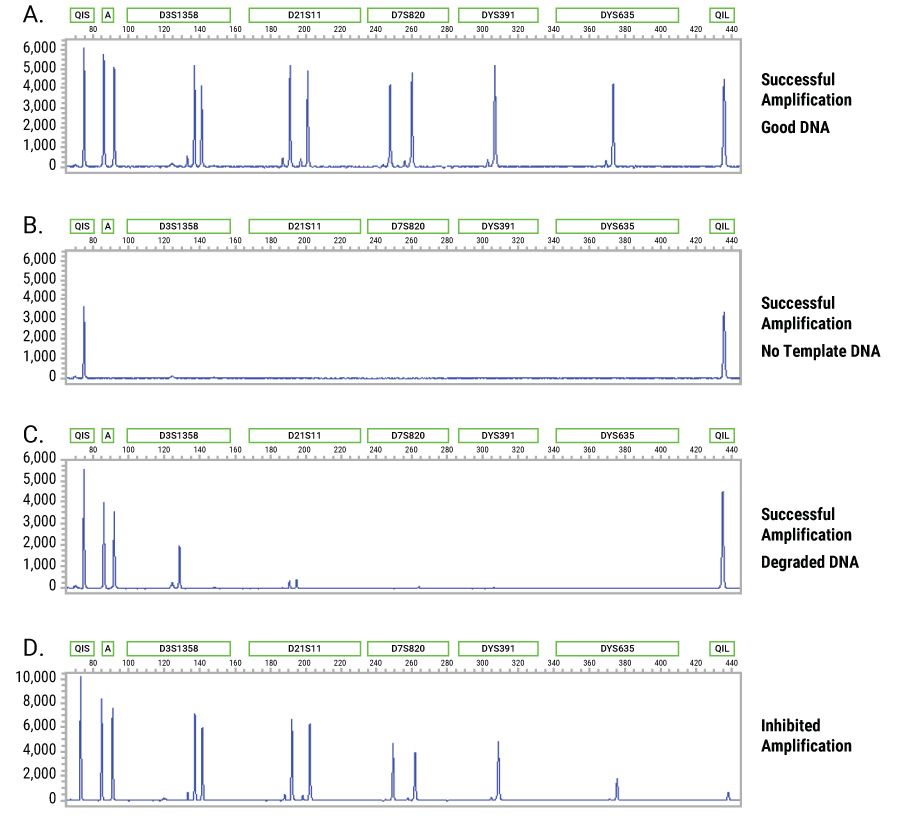
Figure 4. Quality indicators for the PowerPlex® 35GY System. Balanced QIS and QIL peaks indicate a successful STR profile (Panel A). An STR profile with balanced QIS and QIL peaks but no STR peaks indicates that no template DNA was amplified (Panel B). A sloping STR profile with balanced QIS and QIL peaks signals degraded sample (Panel C). A sloping STR profile with a low or missing QIL peak suggests the sample is inhibited (Panel D).
Additionally, the PowerPlex® 35GY System allows direct amplification of single-source reference samples (Figure 5) and supports reduced-volume direct amplification reactions.
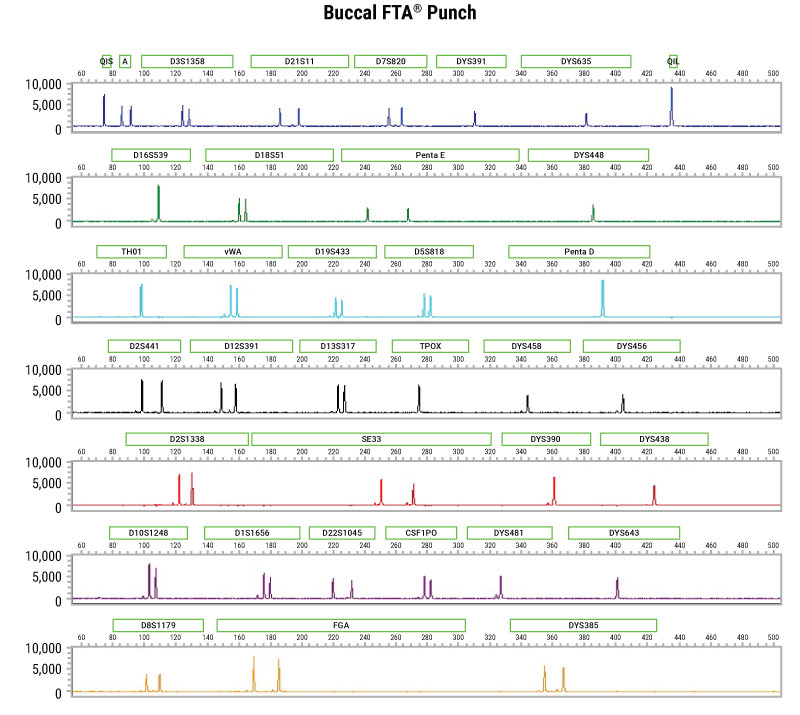
Figure 5. Direct Amplification with the PowerPlex® 35GY System. An FTA® punch of buccal cells was direct-amplified using the PowerPlex® 35GY System. Amplification products were separated on the Spectrum CE System and analyzed using GeneMarker® HID Software for Spectrum CE Systems.
Spectrum CE System
The Spectrum CE System is an automated 8-capillary electrophoresis instrument with an expanded spectral capacity, supporting a range of commercially available STR systems including 5-, 6-, and next generation 8-dye PowerPlex® systems.
The Spectrum CE System uses electrokinetic injection to inject samples from eight wells of a 96-well plate into each of the eight capillaries in the instrument. As samples pass through the polymer-filled capillaries they are separated through the application of an electric current and subsequently detected using laser-excitation and light capture with an integrated camera system. The instrument then automatically replaces the polymer in each capillary and moves on to the next set of eight samples.
The system includes the instrument itself, a desktop computer and a monitor. It is equipped with Spectrum Control Software (SCS) that provides a user-friendly interface for simplified operation. Consumables are pre-filled and ready-to-use, removing the need for time-consuming manual preparation and reducing the chances of human error. The integrated RFID readers are used to capture RFID information on consumables for easy exchange and tracking. Users can monitor each run in real time and view results while data collection is in progress. Pre-installed on the system computer are the genotyping tools GeneMarker® HID for Spectrum CE Systems (GMHID-Spectrum) and HIDAuto for Spectrum CE Systems, which offer high-quality data analysis.
In-lab validation of fragment analysis on the Spectrum CE System demonstrated its performance following the standards and guidelines outlined in the FBI Quality Assurance Standards for Forensic DNA Testing Laboratories and the Scientific Working Group on DNA Analysis Methods Validation Guidelines for DNA Analysis Methods. Characteristics described in validation included baseline noise and threshold evaluation, precision, resolution, accuracy, reproducibility, sensitivity, signal variability, dye balance, spectral artifact analysis, contamination assessment, mixture samples and direct amplification.
Summary
The combined use of the Spectrum CE System and the PowerPlex® 35GY System addresses major pain points experienced by forensic scientists in the lab. These systems can help streamline STR analysis, offering greater efficiency and reliability in forensic DNA testing. The results obtained from forensic analyses using this technology are comprehensive and accurate, supporting the overall reliability and reproducibility of DNA profiles. This in turn can provide crucial information needed to help solve difficult cases, both current and cold.
Technical Support
For labs interested in integrating these systems into their workflow, comprehensive technical support is available to assist in setup and troubleshooting. Both systems come with detailed technical manuals, user guides, protocols and application notes that provide step-by-step instructions, tips and best practices. Users may also find FAQs, video tutorials and other guidance online.
Promega Technical Services Scientists are available to help with troubleshooting, provide reagent and application information and generally serve as a scientific resource. They can be contacted via phone or e-mail to answer questions.
Additionally, the Promega Validation Services team uses their experience and expertise to design a customized validation solution to fit your laboratory’s needs and preferred scope of work, to bring the laboratory online with our instruments and kits.
Users may also register their Spectrum CE System to receive new product and application announcements, free instrument software upgrades and other notifications.
Learn more about the Spectrum CE System and the PowerPlex® 35GY System, and how they can be used together to improve STR analysis.
Related Resources
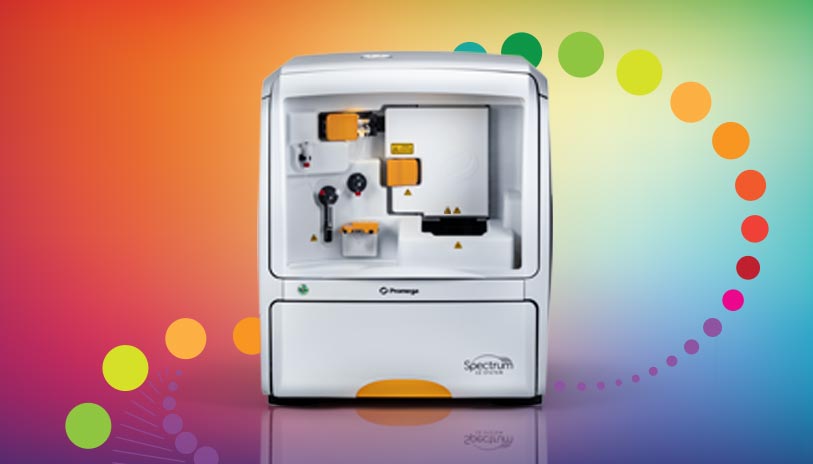
Improved Forensic DNA Analysis with Spectrum CE and Eight-Color STR Technology
Watch this webinar to learn about how the Spectrum CE and PowerPlex® 35GY Systems can be used together to perform efficient, high-quality STR analysis.
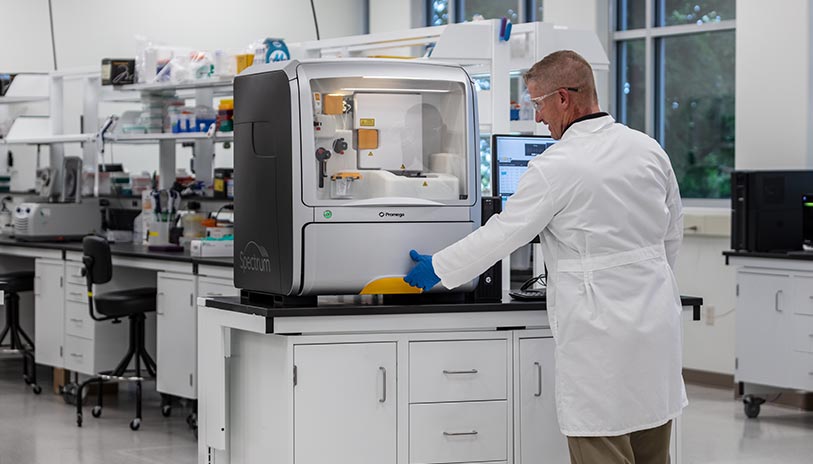
Spectrum CE System
Learn more about the 8-capillary Spectrum CE System, designed to offer forensic scientists greater flexibility in their forensic DNA analyses.
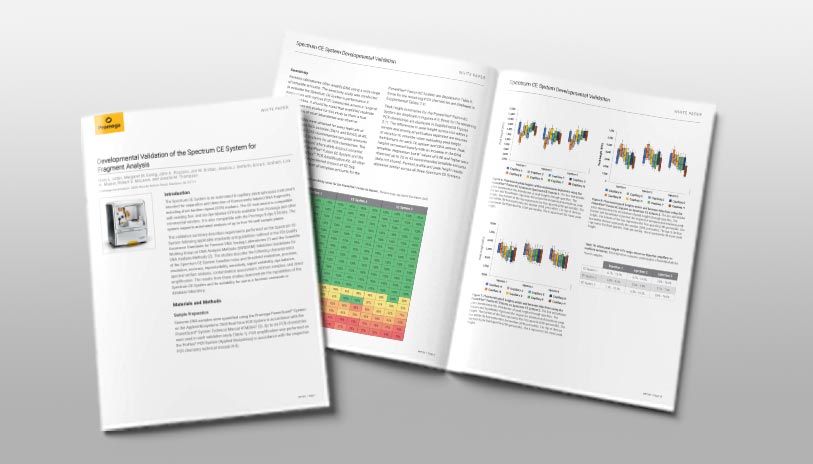
Developmental Validation for Fragment Analysis on the Spectrum CE System
Read this validation summary describing how the Spectrum CE System meets the standards put forth by the FBI and Scientific Working Group for quality assurance and validation of DNA analysis methods.